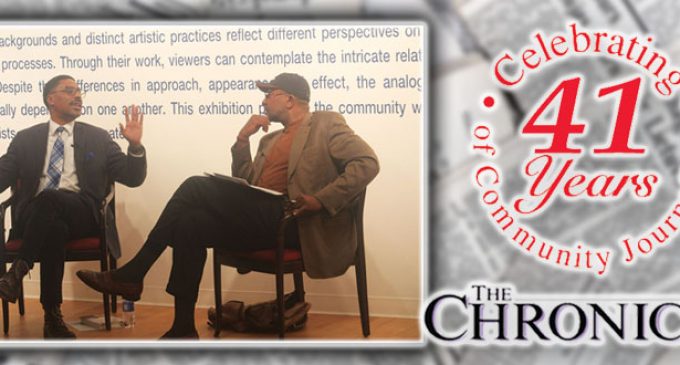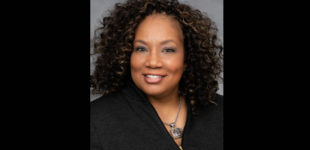Author says: HBCUs are in more danger than ever

Photo by Tevin Stinson
Author/Educator Ron Stodghill discusses his book, “Where Everybody Looks Like Me: At the Crossroads of America’s Black Colleges and Culture,” on Tuesday, Feb. 9 on the campus of Winston-Salem State University.
BY TEVIN STINSON
THE CHRONICLE
Historically black colleges and universities (HBCUs) have overcome a number of obstacles since the first one opened in the 1800s. Although attendance and financial support from the government has increased substantially over the years, some believe HBCUs are in more danger than ever.
One of those believers is Ron Stodghill.
In his nonfiction book titled, “Where Everyone Looks Like Me: At the Crossroads of America’s Black Colleges and Culture,” Stodghill discusses how leaders nationwide are struggling to keep these institutions alive for future generations.
During an open discussion at Winston-Salem State University, Stodghill said that by the year 2035 the number of HBCUs will be down to 35 and only 15 of those will be thriving. He talked about the book and the future of HBCUs with students and faculty members.
“Forces are at work that don’t favor black colleges,” Stodghill said. According to Stodghill, who is a professor at Johnson C. Smith University in Charlotte, changes to a number of policies like the Plus Loan Program have created an economic hardship for all but a handful of the historic black institutions that are mostly found in the South and Midwest.
In 2015, hundreds of students were not allowed to return to WSSU because of changes made to grants designed to benefit students from low-income households. Stodghill mentioned that war debts and the Great Recession have led to less funding for higher education.
“This is a hard time for all institutions of higher education,” he said. “We are witnessing a decline of the American research university, and that is an existential threat to all HBCUs.”
To stay afloat, Stoghill believes that the institutions must place more accountability on administrators and board of trustee members as well as increase standards for admission and implement more majors that relate to the job marketplace.
“We have to do some-thing to help our colleges and universities before it is too late,” he continued. “We have to get our houses in order.”
Not everyone is willing to go along with Stodghill’s theory. During the question and answer portion of the discussion, held inside the Diggs Gallery, a number students and alumni mentioned that although a lot has changed within the education system, they still believe HBCUs will continue to grow and thrive well beyond the year 2035.
“HBCUs have always got the short end of the stick, but we always seem to overcome,” said Terry Andrews, a junior at WSSU. “I understand what Mr. Stodghill is saying, but I still think HBCUs across the nation will continue to thrive.”
Following the discussion, Corey D.B. Walker, dean of College of Arts and Sciences, said it is important to keep this dialogue going because they impact the entire African-American community.
“These types of discussions and debates have been going on for years, and we have to keep them going,” he continued. “Our future depends on it.”











